
Oil cooling in a Corvair engine is a very important thing to consider - the oil runs hotter in any air cooled engine than in a comparable liquid cooled unit - Chevrolet knew this and installed an oil cooler on every Corvair engine built. Like every other system in the car, the stock oil coolers were designed for a stock engine in normal street service, and if you're looking for more performance you'll need to remove more heat from the oil.
Bear in mind that synthetic oil will generally handle more heat then standard oil, in fact one reason Corvettes come with synth oil standard is to avoid the need for an add on cooler. There are roughly three means for increasing the oil cooling capacity, I've listed them in level of effort:
There were four different oil coolers stock - the "folded fin" design, and "plate" style in 3, 8, and 12 plate varieties. First, if you have a 3 plate, toss it and get an 8 plate or folded fin, the 3 plates just don't cool very much. Next, all of the coolers should be cleaned as directed in the owner's manual every year.
The "folded fin" cooler looks like a little radiator and was stock on all '60 and '61 engines. It's generally considered to work well, but it has the downside that it's easily clogged with dirt and leaves. If you remove the cover and clean it regularly they are good coolers. This cooler is a drop in for a 3 or 8 plate, so if you want a little more cooling you can upgrade easily.
The 12 plate cooler will bolt on to any Corvair engine, but you must use the correct shrouds. A standard upper shroud can be cut for the 12 plate cooler, but you need the lower shroud to match. For earlies, this shroud came on 1964 turbos, FCs, and cars with A/C. Late 140s and 180s and some A/C cars used the 12 plate, so the 12 plate lower shroud is fairly common for late models.
As noted in many places, the '63 and later oil coolers have gaps between the plates that allow air to escape instead of going through the cooler. The short history is that the original "folded fin" cooler had solid sides so there was no gap there. When Chevy changed to the "plate" design apparently nobody noticed the gaps or didn't consider them significant. Later on (around '67 or '68) Chevy realized this was a less than optimal design and created add on side shields, I have a set for a 12 plate cooler. They're pretty easy to make, I did some out of aluminum for the 8 plate cooler on the 110 in the '66 Corsa, here are a couple photos:
| Click on an image to see the full size version. | |
|---|---|
 |
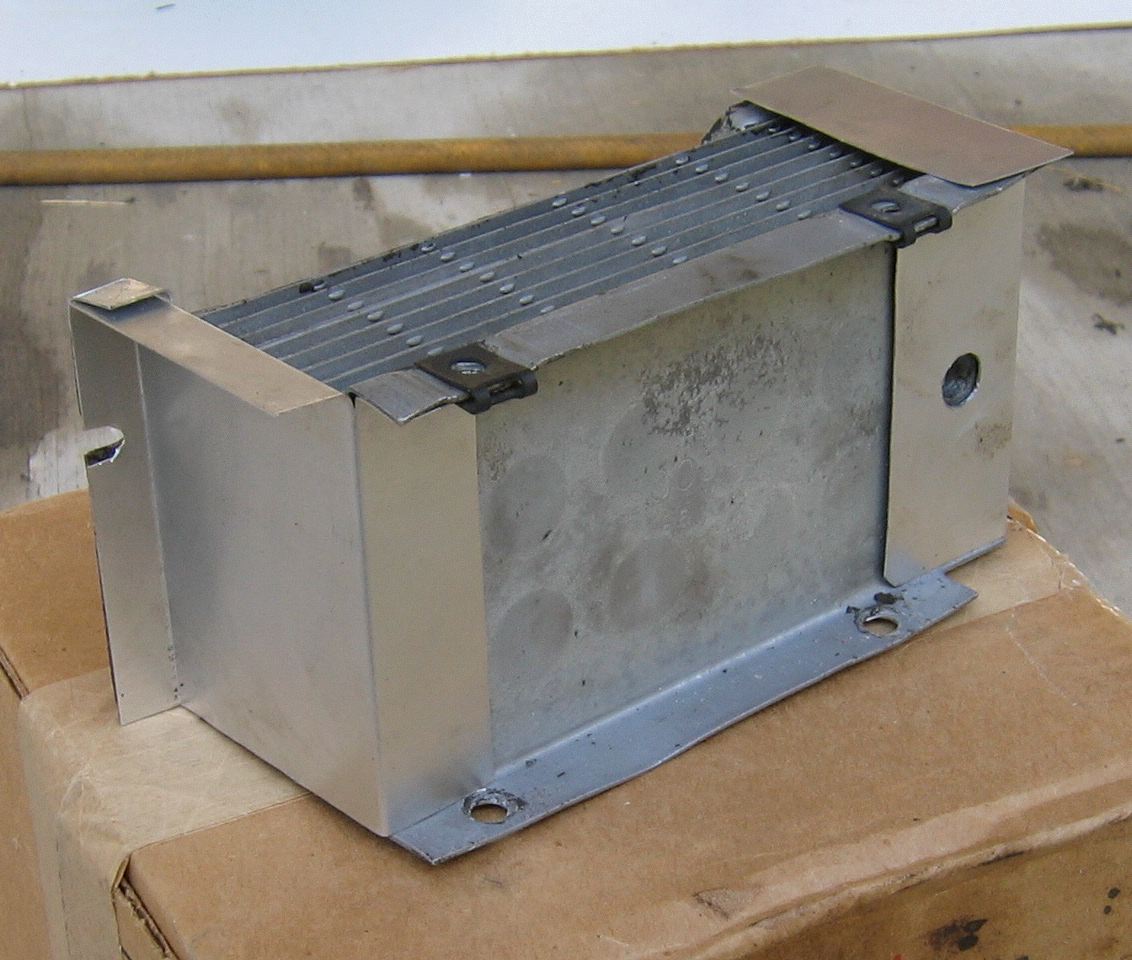 |
Note that the outboard shield has a tab that fits under the screw clip for the cooler top cover. I believe you can purchase similar side covers from several of the Corvair vendors.
Jim Davis did the following to get more cooling in his Rampside:
The original idea came from a Communique tech tip about using two 8 plate coolers stacked in place of a 12 plate . It turns out there is room for a max of 18 plates, so a 12 and 8 or two 12 won't fit. Lon and I discussed the merits of folded fin in place of 8 plates as a bolt in replacement. His personal opinion and mine is the folded fin is better than the 8 plate and as good as a 12 plate. The Ramps oil temp was running about 280 F at 65 mph in the 95 degree Louisiana sun. Synthetic helped but only some. With a dummy engine on the stand I bolted on two folded fin oil coolers, cutting the edges so that they fit closely together. I then cut away the part of the lower damper door that over lapped the second oil cooler and welded on the rail for the second cooler to bolt on to. I started with a 140 top oil cooler cover and a 140 top cover. The oil cooler cover was bolted in place and a piece of 20 ga sheet metal was cut and shaped to cover the gap between the original cooler cover and the top cover. The two pieces were welded together.
The oil cooler next to the engine was put on a drill press and the oil passage holes drilled through. Flush well. A oil cooler seal was cut in half carefully with a razor blade and secured on the outer oil cooler using Hi-Tack. Two stock seals are used on the inner oil cooler. I think the bolt is a 5 and 1/2 -3/8 coarse that holds the coolers on. I haven't had the engine apart in 11 years (150,000+ miles). It is a slow cut and fit process but it is fairly simple. There is just enough room for the oil filter behind the coolers (It is an air-conditioned Rampside). Now the oil temp never gets above 250 F now and usually runs 230 F in the summer - air conditioning on.
Jim Davis
Nick Raeber installed a 12 plate cooler in his early. The top shroud is easy to modify for the 12 plate cover, but the shroud under the cooler requires a little more fabrication work. Although the factory installed the 12 plate on certain 1964 engines (FC engines and A/C equipped), that part is fairly uncommon. You must use this proper damper door piece for the cooling air to exhaust properly.
| Click on an image to see the full size version. | ||
|---|---|---|
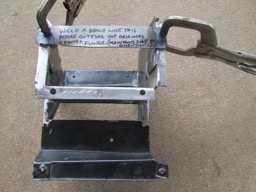 |
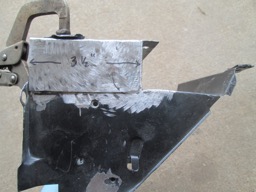 |
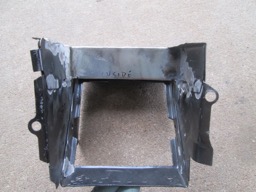 |
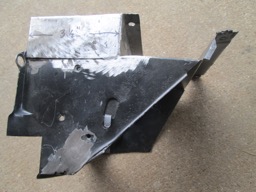 |
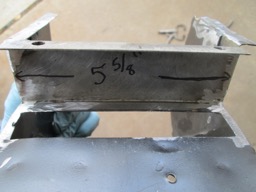 |
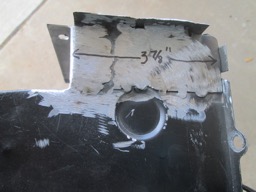 |
 |
 |
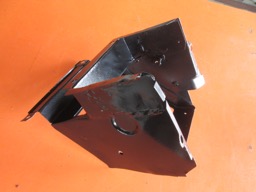 |
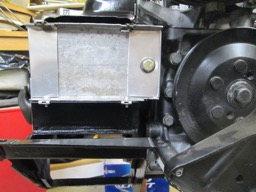 |
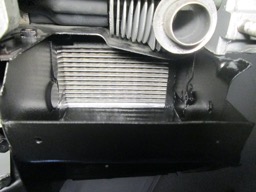 |
 |
| Images courtesy Nick Raeber. | ||
For track use a remote front mounted cooler is really the only way to go. Kevin Wilson has a 3.1 liter Corvair that he uses as a dual purpose car, it has the air inlet where the front license plate goes, and the outlet in the floor of the trunk behind the front spoiler. With a setup like this you should definitely run an oilstat so the cooler isn't in use until the oil has some heat in it.
| Click on an image to see the full size version. | |
|---|---|
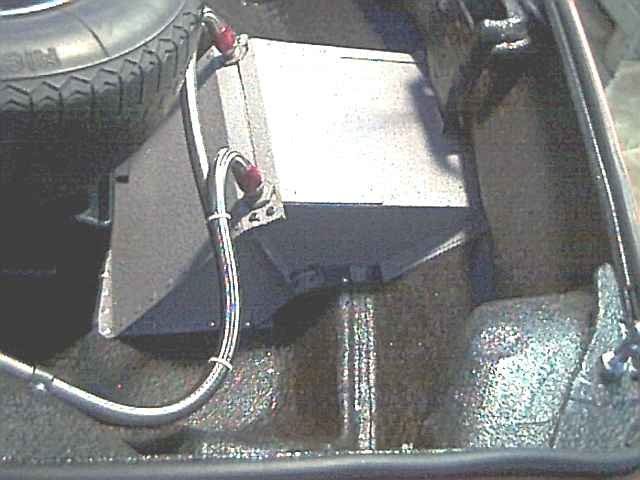 |
 |
| Images courtesy Kevin Wilson. | |
Rick Norris did this set of lines to the front mounted oil cooler for his 2015 track car, they are light and will remove some heat on their own. Putting them in the tunnel gives them protection in case of any off track excursions:
1/2" EMT (electrical conduit) is not only light weight but it's cheap when compared to the correct hose. Under three bucks for a 10' stick. I order the steel AN weld ends from Pegasus. You will have to drill out the weld socket on the fitting slightly to fit the OD of the EMT and be sure to grind off all the galvanizing before welding.
It is one single stick of EMT. As a industrial piping designer for 40 plus years it is a piece of cake! Learning to plan ahead is the trick.
Rick Norris